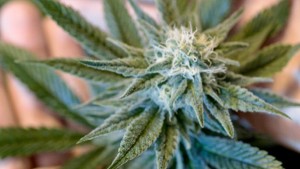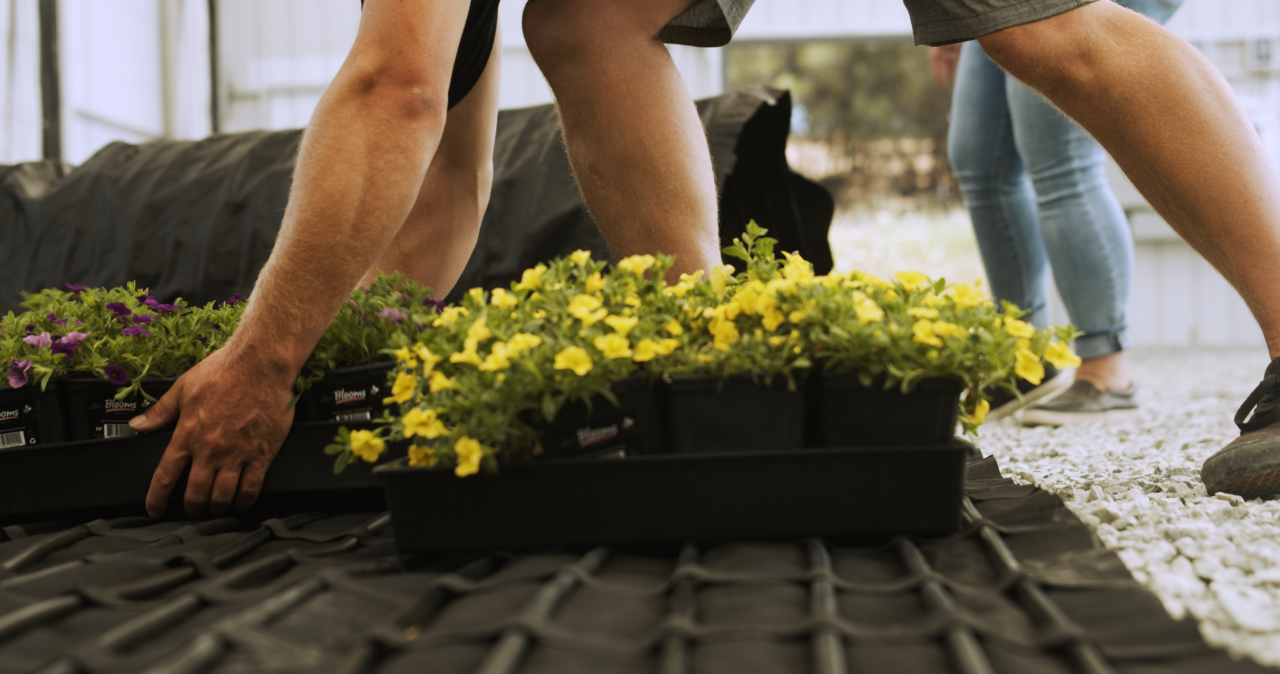Cannabis Producer Solstice Provides Insight To Greenhouse Growers
 To gain some real-world insight about what it takes to produce and sell cannabis, and some of the challenges and roadblocks involved, Greenhouse Grower reached out to Solstice, a producer and processor of cannabis for medical and adult use in Washington state. Alex Cooley, the co-founder and vice president of Solstice, gave us an exclusive interview, and answered the following questions to give greenhouse growers a glimpse into different aspects involved in cannabis production.
To gain some real-world insight about what it takes to produce and sell cannabis, and some of the challenges and roadblocks involved, Greenhouse Grower reached out to Solstice, a producer and processor of cannabis for medical and adult use in Washington state. Alex Cooley, the co-founder and vice president of Solstice, gave us an exclusive interview, and answered the following questions to give greenhouse growers a glimpse into different aspects involved in cannabis production.
Visit the Solstice website or follow Solstice on Twitter @SolsticeGrown for more information.
Greenhouse Grower (GG): First, let’s get to know you. Could you tell us some background about Solstice and how it got started?
Alex Cooley: We started Solstice in 2011 to help legitimize the medical cannabis marketplace by providing consistent, lab-tested cannabis of high quality and creating the state’s first cultivation brand. It was started by myself and two other partners, Will Denman and Peter Miller. Since the beginning, we have worked to raise the bar and act like any other business. We have done this by building the first fully permitted cultivation facility in the state of Washington, helping to reform laws related to medical and adult use cannabis, presenting the product in a way that meets the consumer at a higher level than anticipated and working openly with legislators and regulators from the city to the federal level.
GG: What are the primary markets for your crops?
Cooley: Our primary market is the Washington state medical cannabis system. We are now expanding into the adult use market, and we believe that we will be in that market soon.
GG: I see that you are building a second facility – could you tell us about that and what’s involved in that new venture?
Cooley: We are currently under construction of our adult use indoor production and processing facility, which will be online in early September. It is an all-indoor, controlled environment agriculture (CEA) facility that encompasses two cultivation spaces totaling 18,000 square feet and a processing space totaling 10,000 square feet on roughly an acre in the heart of Seattle’s SODO district. A lot is involved in setting up a facility of this nature. There are many systems that are similar to greenhouses, but our mechanical and electrical systems are a bit more complex and we also have to deal with significantly different building codes.
GG: How closely are you regulated by the state of Washington? Is there a limit to the number of plants you grow? How often are you subjected to inspections?
Cooley: We are extremely closely regulated by the Washington State Liquor Cannabis Board. You could say that we are one of the most regulated and tested crops in existence. We are limited to the square feet of canopy we can cultivate. We are subject to inspections at anytime. We anticipate to have six to eight inspections in the first year of operation, so long as we do not modify any of our operating plan.
GG: How have you been affected, if at all, by federal laws? How do you deal with the financial issues of banks not accepting money generated from cannabis-related operations?
Cooley: The biggest effect outside of paranoia from the federal government has been tax code 280e, which prevents all cannabis business from taking standardized business deductions, which can result in an effective tax rate of more than 100 percent. We are part of the 0.5 percent that has a bank willing to offer deposit services to the cannabis industry; however, I have had more than 10 bank accounts closed in my career. We even had a local credit union close our accounts even after we provided letters of recommendation from the Mayor of Seattle, City Attorney of Seattle, multiple Seattle Council members, multiple members of our state legislature and the head of drug policy reform for the ACLU. The short of it is banking can be VERY difficult; there are multiple occurrences of 20+ year personal and non-cannabis accounts being closed for trying to bank cannabis funds.
GG: What technology is involved in growing the crop? Do you grow in greenhouses or warehouses? If you do not currently grow in greenhouses, is greenhouse production a consideration for Solstice?
Cooley: To date, we have utilized a myriad of indoor spaces, hoop houses, cold frames and outdoor. The majority of experience is in warehouse cultivation. We do have every intention of cultivating in greenhouses, in fact we consider light dep/sup greenhouses to be the future of cannabis cultivation. We have purchased a 44-acre farm, where we have a master plan to build just under 10 acres of greenhouses and develop 2 acres of outdoor cultivation space.
GG: What is the difference between producing cannabis for medical use versus producing for recreational use?
Cooley: That is a question that has many answers. In essence, all cannabis has medical, adult use and wellness applications, depending on the application. No matter the plant, lilies or cannabis, they need many similar inputs. If you are producing a plant with defined methodologies, medical and adult use are very similar. Developing new plants for medical requires a different understanding and practices than adult use. The difference between the two marketplaces are much more evident in processing than production.
GG: What are the main challenges you face in producing cannabis?
Cooley: Being a start up whose practices qualify for severe federal prison sentences and even a death sentence under certain circumstances, that all hinges on an uninsurable crop.
GG: How do you control insect pressure and disease on your cannabis crops, without any labeled crop protection tools available?
Cooley: Integrated Pest Management and non-systemic organic interventions when needed.
GG: How do you ensure sustainability of water resources in this water-intensive crop? Do you recycle, treat and reuse water?
Cooley: At this time we do not, but many hydroponic cannabis growers use run-off recapturing systems.
GG: What is involved with the licensing of cannabis production for medical use, and how long did it take to get a permit to do this? How much did it cost to get started?
Cooley: At this time there are no state-issued licenses for medical use. We recently passed a law (SB 5052) that will fold medical cannabis into the adult use licensing system. Our facilities are fully permitted with the City of Seattle for building and zoning for cannabis cultivation, which we were the first in the city and state to do. It took us a little under a year and roughly $20 per square foot in building upgrades to comply with code.
GG: Are there limited numbers of growers in Washington? Do you all communicate with one another or is it highly competitive?
Cooley: There is not necessarily a limit on the number of growers. There was an open application window for one month, two years ago. That has created a finite number of licenses available. It is a spectrum of engagement regarding to cooperation and competition.
GG: Are you planning to branch out to other states, and where?
Cooley: We are. We see Oregon as our second state and then California and Nevada.
GG: What security and traceability measures and technology did you have to put in place to produce medical cannabis? Do these same measures and technology apply to recreational use – are they necessary?
Cooley: At this time, nothing is required for medical but we utilize the same systems required for adult use. We use an enterprise resource planning (ERP) SAP-based traceability software that is compliant with the state requirements of seed-to-sale tracking. We have extensive security systems that are required by the state that are a bit overkill and costly, but are part of doing business.
GG: With your experience, how do you think cannabis production will change the face of agriculture?
Cooley: I would say that it already has, mainly in the area of lighting technology. I think there will be many more advancements in postharvest technology. I do also believe that agriculture will change cannabis cultivation. So much of cannabis cultivation is very far removed from (agriculture).
GG: What are the biggest issues growers should consider before pursuing cannabis production?
Cooley: It is not as easy as it looks from the outside. Running a cannabis business takes a high level of understanding of complex systems, logistics, politics and legal restrictions.










